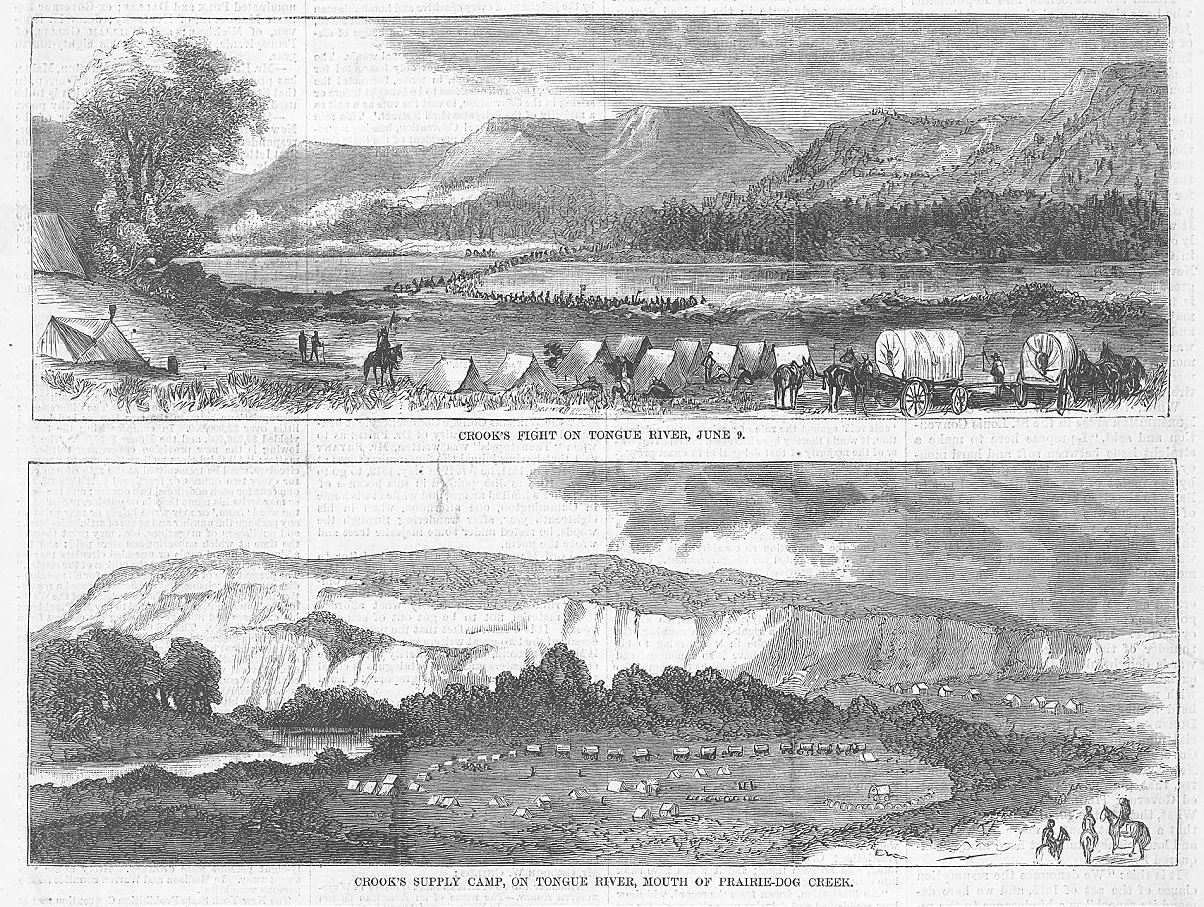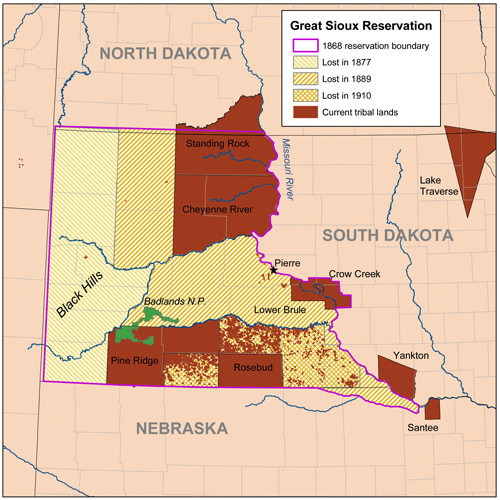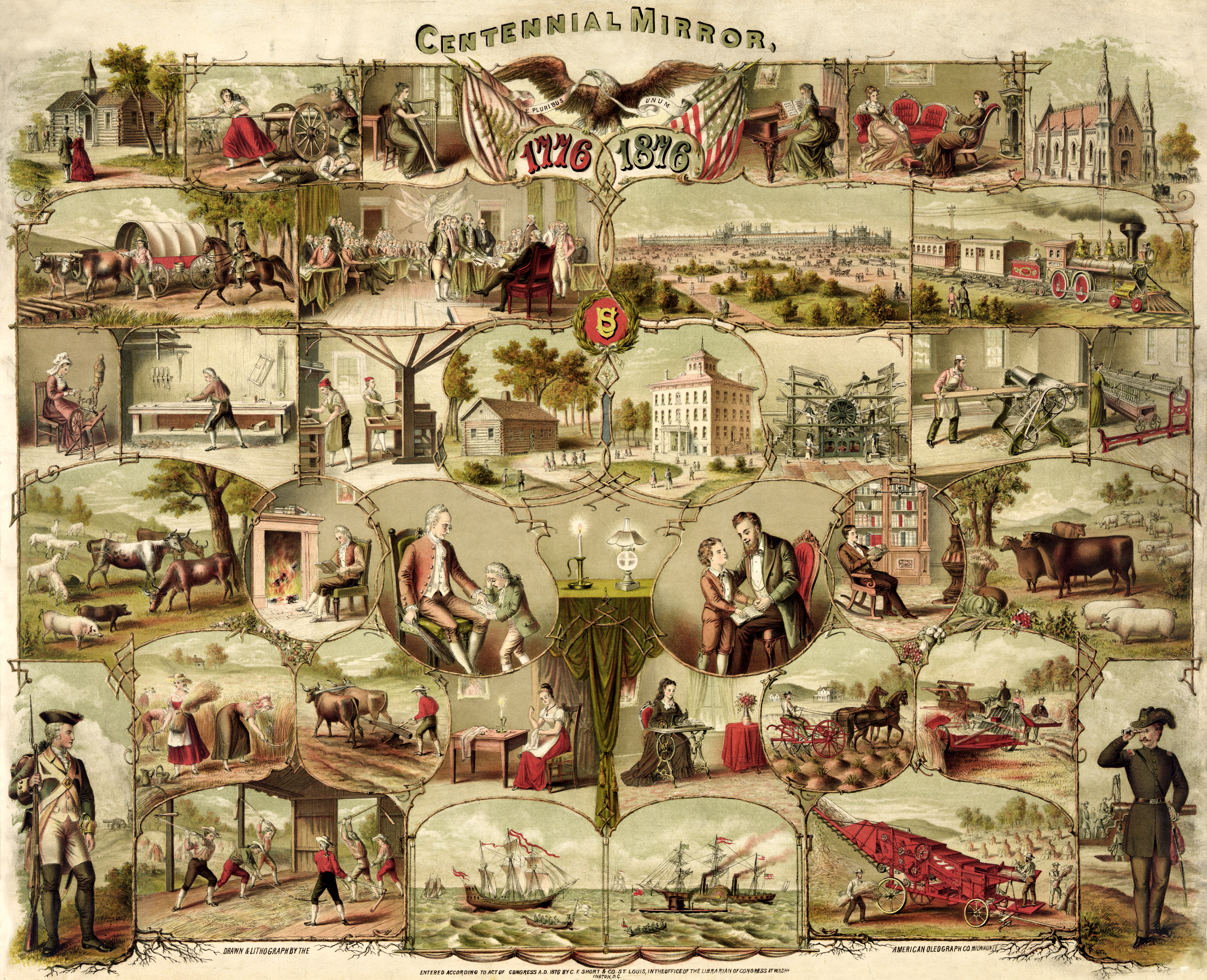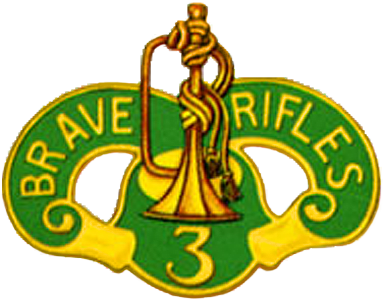|
Battle Of Prairie Dog Creek (1876)
The Battle of Prairie Dog Creek, also known as the Skirmish at Tongue River Heights, or the Battle of the Tongue River (1876), part of the Great Sioux War of 1876, occurred on June 9, 1876, at the confluence of Prairie Dog Creek and the Tongue River primarily in Wyoming Territory. The battle On June 9, 1876, soldiers and civilians under the command of Brigadier General George R. Crook, were encamped on the Tongue River at the mouth of Prairie Dog Creek. With Crook, were over 950 United States cavalry and infantry soldiers, and about 100 civilians. While the soldiers were in camp on June 9, some observed two mounted Cheyenne warriors riding along the bluffs on the north bank of the Tongue River. Then, about 200 concealed Cheyenne warriors suddenly fired a volley of .44 Henry, and .50 caliber rifles from the bluffs into Crook's camp. Another small band of warriors had remained hidden to the east of Crook's camp, with the intention of stealing the soldiers' horses when their atten ... [...More Info...] [...Related Items...] OR: [Wikipedia] [Google] [Baidu] |
Great Sioux War Of 1876
The Great Sioux War of 1876, also known as the Black Hills War, was a series of battles and negotiations that occurred in 1876 and 1877 in an alliance of Lakota Sioux and Northern Cheyenne against the United States. The cause of the war was the desire of the US government to obtain ownership of the Black Hills. Gold had been discovered in the Black Hills, settlers began to encroach onto Native American lands, and the Sioux and the Cheyenne refused to cede ownership. Traditionally, American military and historians place the Lakota at the center of the story, especially because of their numbers, but some Native Americans believe the Cheyenne were the primary target of the American campaign. Among the many battles and skirmishes of the war was the Battle of the Little Bighorn; often known as Custer's Last Stand, it is the most storied of the many encounters between the US Army and mounted Plains Indians. Despite the Indian victory, the Americans leveraged national resources to fo ... [...More Info...] [...Related Items...] OR: [Wikipedia] [Google] [Baidu] |
Battle Of The Rosebud
The Battle of the Rosebud (also known as the Battle of Rosebud Creek) took place on June 17, 1876, in the Montana Territory between the United States Army and its Crow and Shoshoni allies against a force consisting mostly of Lakota Sioux and Northern Cheyenne Indians during the Great Sioux War of 1876. The Cheyenne called it the Battle Where the Girl Saved Her Brother because of an incident during the fight involving Buffalo Calf Road Woman. General George Crook's offensive was stymied by the Indians, led by Crazy Horse, and he awaited reinforcements before resuming the campaign in August. Background After their victory in Red Cloud's War and with the signing of the Treaty of Fort Laramie (1868), the Lakota and their Northern Cheyenne allies were allocated a reservation including the Black Hills, in Dakota Territory and a large area of "unceded territory" in what became Montana and Wyoming. Both areas were for the exclusive use of the Indians, and non-Indians (except for US ... [...More Info...] [...Related Items...] OR: [Wikipedia] [Google] [Baidu] |
Battles Of The Great Sioux War Of 1876
A battle is an occurrence of combat in warfare between opposing military units of any number or size. A war usually consists of multiple battles. In general, a battle is a military engagement that is well defined in duration, area, and force commitment. An engagement with only limited commitment between the forces and without decisive results is sometimes called a skirmish. The word "battle" can also be used infrequently to refer to an entire operational campaign, although this usage greatly diverges from its conventional or customary meaning. Generally, the word "battle" is used for such campaigns if referring to a protracted combat encounter in which either one or both of the combatants had the same methods, resources, and strategic objectives throughout the encounter. Some prominent examples of this would be the Battle of the Atlantic, Battle of Britain, and Battle of Stalingrad, all in World War II. Wars and military campaigns are guided by military strategy, whereas bat ... [...More Info...] [...Related Items...] OR: [Wikipedia] [Google] [Baidu] |
Battles Involving The Cheyenne
A battle is an occurrence of combat in warfare between opposing military units of any number or size. A war usually consists of multiple battles. In general, a battle is a military engagement that is well defined in duration, area, and force commitment. An engagement with only limited commitment between the forces and without decisive results is sometimes called a skirmish. The word "battle" can also be used infrequently to refer to an entire operational campaign, although this usage greatly diverges from its conventional or customary meaning. Generally, the word "battle" is used for such campaigns if referring to a protracted combat encounter in which either one or both of the combatants had the same methods, resources, and strategic objectives throughout the encounter. Some prominent examples of this would be the Battle of the Atlantic, Battle of Britain, and Battle of Stalingrad, all in World War II. Wars and military campaigns are guided by military strategy, whereas bat ... [...More Info...] [...Related Items...] OR: [Wikipedia] [Google] [Baidu] |
1876 In The United States
Events from the year 1876 in the United States. Incumbents Federal Government * President: Ulysses S. Grant ( R-Illinois) * Vice President: ''vacant'' * Chief Justice: Morrison Waite (Ohio) * Speaker of the House of Representatives: Michael C. Kerr ( D-Indiana) (until August 19), Samuel J. Randall ( D-Pennsylvania) (starting December 4) * Congress: 44th Events January–March * February 2 – The National League of Professional Base Ball Clubs is formed at a meeting in Chicago, Illinois; it replaced the National Association of Professional Base Ball Players. Morgan Bulkeley of the Hartford Dark Blues is selected as the league's first President. * February 22 – Johns Hopkins University is founded in Baltimore, Maryland. * February/March – ''The Harvard Lampoon'' humor magazine is founded in Cambridge, Massachusetts. * March 7 – Alexander Graham Bell is granted a patent for an invention he calls the telephone (patent #174,466). * March 10 – ... [...More Info...] [...Related Items...] OR: [Wikipedia] [Google] [Baidu] |
Northern Cheyenne
The Northern Cheyenne Tribe of the Northern Cheyenne Indian Reservation ( chy, Tsėhéstáno; formerly named the Tongue River) is the federally recognized Northern Cheyenne tribe. Located in southeastern Montana, the reservation is approximately in size and home to approximately 5,000 Cheyenne people. The tribal and government headquarters are located in Lame Deer, also the home of the annual Northern Cheyenne pow wow. The reservation is bounded on the east by the Tongue River and on the west by the Crow Reservation. There are small parcels of non-contiguous off-reservation trust lands in Meade County, South Dakota, northeast of the city of Sturgis. Its timbered ridges that extend into northwestern South Dakota are part of Custer National Forest and it is approximately east of the site of the 1876 Battle of the Little Bighorn. According to tribal enrollment figures as of March 2013, there were approximately 10,050 enrolled tribal members, of which about 4,939 were residing o ... [...More Info...] [...Related Items...] OR: [Wikipedia] [Google] [Baidu] |
9th Infantry Regiment (United States)
The 9th Infantry Regiment ("Manchu") is a parent infantry regiment of the United States Army. Unrelated units designated the 9th Infantry Regiment were organized in the United States Army in 1798 during the Quasi-War, in 1812 during the war of 1812, and in 1847 during the Mexican–American War. The 1812 regiment fought in the Battle of Lundy's Lane, and the 1847 regiment in the Battle for Mexico City. The lineage of the current regiment begins with the 1855 organization of the 9th Infantry Regiment, which was dispatched to the Pacific Northwest, where it served in the American Indian Wars. The regiment remained in the west during the American Civil War, garrisoning posts near San Francisco. After the end of the American Civil War the regiment continued its service through the final Indian Wars, then fought at the Battle of San Juan Hill during the Spanish–American War. During the Boxer Rebellion, the 9th Infantry was sent to China, where it earned the nickname Manchu. After ... [...More Info...] [...Related Items...] OR: [Wikipedia] [Google] [Baidu] |
4th Infantry Regiment (United States)
The U.S. 4th Infantry Regiment ("Warriors") is an infantry regiment in the United States Army. It has served the United States for approximately two hundred years. History Origins It has been alleged that the regiment traces its lineage to the original Fourth United States Infantry, which was organized as the Infantry of the Fourth Sub-Legion on 4 September 1792, only four years after the adoption of the Constitution. The infantry of the Fourth Sub-Legion fought at Miami Rapids in 1794. In 1796, it was re-designated the Fourth Regiment of the Infantry. After ten years, due to a reduction in the army, the regiment was disbanded in 1802. However, according to the United States Army Center of Military History, this Fourth Infantry was a temporary unit with no lineal connection to either the original permanent 4th Infantry Regiment, or the modern 4th Infantry Regiment. See the lineage of the first 4th US Infantry below. Tecumseh's War In 1808, the Regular Army was reorganized to ... [...More Info...] [...Related Items...] OR: [Wikipedia] [Google] [Baidu] |
3d Cavalry Regiment (United States)
The 3rd Cavalry Regiment, formerly 3rd Armored Cavalry Regiment ("Brave Rifles") is a regiment of the United States Army currently stationed at Fort Hood, Texas. The regiment has a history in the United States Army that dates back to 19 May 1846, when it was constituted in the Regular Army as the Regiment of Mounted Riflemen at Jefferson Barracks, Missouri. This unit was reorganized at the start of the American Civil War as the 3rd U.S. Cavalry Regiment on 3 August 1861. In January 1943, the regiment was re-designated as the 3rd Cavalry Group ( Mechanized). Today they are equipped with Stryker vehicles. The 3rd Armored Cavalry Regiment was the last heavy armored cavalry regiment in the U.S. Army until it officially became a Stryker regiment on 16 November 2011. It will retain its lineage as the 3rd Cavalry Regiment. Under various names it has seen action during eleven major conflicts: the Indian Wars, the Mexican–American War, the American Civil War, the Spanish–American W ... [...More Info...] [...Related Items...] OR: [Wikipedia] [Google] [Baidu] |
Frederick W
Frederick may refer to: People * Frederick (given name), the name Nobility Anhalt-Harzgerode *Frederick, Prince of Anhalt-Harzgerode (1613–1670) Austria * Frederick I, Duke of Austria (Babenberg), Duke of Austria from 1195 to 1198 * Frederick II, Duke of Austria (1219–1246), last Duke of Austria from the Babenberg dynasty * Frederick the Fair (Frederick I of Austria (Habsburg), 1286–1330), Duke of Austria and King of the Romans Baden * Frederick I, Grand Duke of Baden (1826–1907), Grand Duke of Baden * Frederick II, Grand Duke of Baden (1857–1928), Grand Duke of Baden Bohemia * Frederick, Duke of Bohemia (died 1189), Duke of Olomouc and Bohemia Britain * Frederick, Prince of Wales (1707–1751), eldest son of King George II of Great Britain Brandenburg/Prussia * Frederick I, Elector of Brandenburg (1371–1440), also known as Frederick VI, Burgrave of Nuremberg * Frederick II, Elector of Brandenburg (1413–1470), Margrave of Brandenburg * Frederick William, Elector ... [...More Info...] [...Related Items...] OR: [Wikipedia] [Google] [Baidu] |
2nd Cavalry Regiment (United States)
The 2nd Cavalry Regiment, also known as the 2nd Dragoons, is an active Stryker infantry and cavalry regiment of the United States Army. The Second Cavalry Regiment is a unit of the United States Army Europe and Africa, with its garrison at the Rose Barracks in Vilseck, Germany. It can trace its lineage back to the early part of the 19th century. In addition to its two current names, former names are 2nd Riflemen, 2nd Dragoons, 2nd Constabulary Regiment, 2nd Armored Cavalry, 2nd Cavalry (Light), and 2nd Stryker Cavalry. Previous names and dates Previous designations of the regiment: 2nd Regiment of Dragoons (May 1836 – March 1843, April 1844 – August 1861); 2nd Regiment of Riflemen (March 1843 – April 1844); 2nd US Cavalry Regiment (August 1861 – July 1942); 2nd Cavalry Regiment (Mechanized) (January 1943 – December 1943); 2nd Cavalry Group (Mechanized) (December 1943 – July 1946); 2nd Constabulary Regiment (July 1946 – November 1948); 2nd Armored Cavalr ... [...More Info...] [...Related Items...] OR: [Wikipedia] [Google] [Baidu] |
Department Of The Platte
The Department of the Platte was a military administrative district established by the U.S. Army on March 5, 1866, with boundaries encompassing Iowa, Nebraska, Dakota Territory, Utah Territory and a small portion of Idaho. With headquarters in Omaha, the district commander oversaw the army's role initially along the Overland route (or Oregon Trail) to Salt Lake City, then later the construction route of the Union Pacific Railroad. The district also included the Montana road (or Bozeman Trail) through eastern Wyoming. The district was discontinued when the Army's command was reorganized in 1898. Headquarters The Headquarters of the Department of the Platte was located in downtown Omaha, Nebraska for many years. When the headquarters was transferred to Fort Omaha in 1878, the building it was located in was found unsuitable, and the headquarters were again transferred downtown.Mattes, M.J. (1998) ''Indians, Infants, and Infantry: Andrew and Elizabeth Burt on the Frontier.'' Universi ... [...More Info...] [...Related Items...] OR: [Wikipedia] [Google] [Baidu] |







